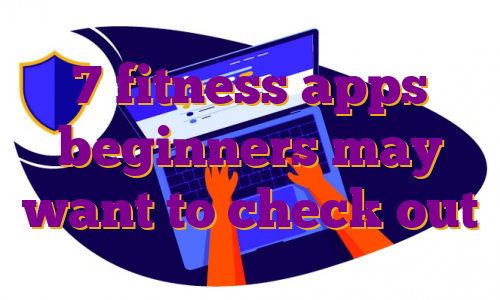Price: The 2022 Toyota GR86 starts at $27,700 with a manual transmission and $29,200 with an automatic.The Toyota 86 took the 2021 model year off. It returns in significantly updated form late this year as a 2022 model with a new name: the GR86. That “GR” designation comes from Gazoo Racing, the internationally known racing team that did much of the development work on this new Toyota
TM,
+1.80%
GR86, which continues to be a lightweight and highly entertaining rear-wheel-drive (RWD) coupe that’s a mechanical cousin of the jointly developed Subaru BRZ
FUJHY,
-2.21%.
The Toyota GR86
Toyota
The big news for 2022? The debut of a larger new 2.4-liter engine. This new flat-4 powerplant produces 228 horsepower at 7,000 rpm and 184 lb-ft of torque at 3,700 rpm, which compares quite favorably to the 205 hp and 156 lb-ft generated by the previous 2.0-liter. This new engine has a broader band of torque, so it doesn’t need to be revved as highly to make good power. Power reaches the GR86’s rear wheels via a close-ratio 6-speed manual transmission or an optional 6-speed automatic with paddle shifters. Also standard is a limited-slip differential that helps the GR86 squirt out of corners with minimal rear wheelspin. Toyota says the new GR86, with the manual gearbox, hits 60 mph in 6.1 seconds, versus 7.0 for the previous 2.0-liter car. Two models are available: the GR86 and the GR86 Premium. All 2022 Toyota GR86s get a digital instrument panel with three display modes (Normal, Sport, Track), plus Apple
AAPL,
-0.13%
CarPlay, Android Auto, and an 8-inch multimedia touchscreen. While the standard GR86 gets a 6-speaker audio system, the Premium has an 8-speaker arrangement to complement its upgraded upholstery. While the new GR86 looks similar to the outgoing 2020 86, it has what Toyota calls a “G Mesh” grille, which is complemented by angular LED headlamps, functional front vents, and side spoilers that improve stability and steering response at high speeds. The GR86 Premium, which rides on 18-inch forged alloy wheels, makes its presence known with a tall duckbill rear spoiler. As a race team, Gazoo Racing knows that less weight means more agility. To that end, the new GR86 now uses some aluminum in its hood and fenders to keep weight low, somewhere in the vicinity of 2,800 pounds. Not only is the GR86 very light, but its flat-4 engine helps to give it a low center of gravity, which improves cornering performance. Competitors for the 2022 Toyota GR86 include the Mazda
MZDAY,
MX-5 Miata and possibly even the Chevrolet Camaro and Ford
F,
+1.23%
Mustang. While these Americans certainly are fun rear-wheel-drive coupes, they are quite different in character than the agile little Toyota. See: The 2022 Mazda MX-5 Miata: It’s all about the fun of driving2022 Toyota GR86 pricing The 2022 Toyota GR86 starts at $27,700 with a manual transmission and $29,200 with an automatic. In Premium trim, the GR86 manual starts at $30,300 while the GR86 automatic begins at $31,800. The destination fee is $1,025. Included with all 2022 Toyota GR86 models is a no-cost plan that covers normal factory maintenance and 24-hour roadside assistance for two years or 25,000 miles, whichever comes first.
The Toyota GR86
Toyota
Driving the 2022 Toyota GR86 If you’re looking for a fun-to-drive sports car that lets you push its limits without needing to travel at supersonic speeds, the 2022 Toyota GR86 is an ideal dance partner. Even with the added horsepower and torque of the 2.4-liter 4-cylinder boxer engine, the stiffer and tauter GR86 chassis feels capable of coping with far more power. That being said, it’s a welcome relief to drive a sporty vehicle where the engine doesn’t entirely dominate the driving experience. What makes the 2022 GR86 so enjoyable is how the engine, gearbox, brakes, and steering all work together to create a thrilling drive. And yes, when you’re in the mood to relax and simply putter along down the highway or through town, the GR86 is happy to do that, too. The ride is firm, as you’d expect, but the engine doesn’t drone on the highway, and you’re not shaken to pieces over rough pavement. Is it serene like a luxury car? Absolutely not! Though the GR86 is more livable on a daily basis than you imagine – the snug cockpit and small trunk are the biggest limiting factors for long drives Check out: 7 off-the-radar places worth stopping on a California road trip. Enthusiast drivers will jump at the standard 6-speed manual and, having driven both it and the automatic on a racetrack and public roads, it enlivens the GR86 that extra little bit. While the 6-speed automatic performs admirably and gear changes can be done via paddle shifters, the manual lets you keep the engine humming exactly where you want it, particularly when careening around a track. And careen we did, oftentimes sideways through corners – and at one point, beyond the limits of adhesion afforded by the GR86’s tires! Of the various trims we tested, the base GR86 fitted with the manual transmission, and riding on 17-inch alloys wrapped by Michelin Primacy HP tires, felt the lightest on its feet (and the easiest to break rear traction without causing the driver to break into a sweat). Keep in mind, this was during the track portion of our drive, where some seriously sideways moments were easily reigned in by simply lifting off the throttle. If you’re after a user-friendly sports car in which to learn how to drive better and faster, the GR86 ranks among the best. A little more road feel in the steering would be nice, however. Don’t get us wrong, the GR86 is extremely nimble and darts around corners. Except you don’t always feel like the front wheels are telegraphing to the steering wheel (and your fingertips) exactly what’s going on at the road surface. To be fair, compared with 99% of other vehicles sold today, this level of handling will be a revelation to anyone accustomed to a driving life spent in sedans or, gasp, a diet of only SUVs. The GR86 accelerates from zero to 60 mph in 6.1 seconds with the 6-speed manual or 6.6 seconds with the 6-speed automatic. This is one of the increasingly rare instances in which a stick-shift is quicker than an optional automatic ‘box fitted to the same vehicle. At the time of our test drive, Toyota would only say that all versions of the GR86 weigh approximately 2,800 pounds. From our perspective, the manual transmission models felt slightly lighter when jumping between them and GR86s with the automatic. Don’t miss: This crowdsourced site shames car dealers for huge markupsInterior comfort The interior of the 2022 Toyota GR86 has two significant updates – a new digital gauge package and sportier seats, both of which enhance the track-focused ambience of the cockpit. As mentioned in our Favorite Features below, the digital gauge package has three different modes, but it’s also enhanced by LCD toggle displays with silver trimmed dials. There’s also a 7-in TFT (Thin Film Transistor) display featuring a neat startup animation sequence that’s inspired by the horizontal pistons of the flat-4 boxer engine. While the Toyota GR86 certainly qualifies as a compact sports coupe, its practicality is enhanced by a pair of rear seats, which are handy to have when needed and fold forward to increase the car’s cargo capacity. Getting an adult back there is another story, however. Headroom and legroom are in scarce supply, though small kids might be OK for short drives. Consider the rear seat an extension of the trunk, and you’ll be better off.Exterior styling Toyota’s new-generation GR86 looks much like the previous 86, but freshened. It continues to look low and athletic, as a lightweight sports coupe should. Visual highlights include a new “G Mesh” grille and angled LED headlights, plus functional front vents and side spoilers that aid vehicle stability at speed. The standard 86 wears forged 17-inch alloy wheels with Michelin Primacy HP tires. The GR86 in Premium trim is equipped with sticky Michelin Pilot Sport 4 on forged 18-inch wheels that are black. Further differentiating the new GR86 Premium is its tall duckbill rear spoiler. Available colors on the 2022 Toyota GR86 include two shades of blue and two shades of gray, plus red, white, and black.Favorite features The new 2.4-liter engine
Thanks to its extra displacement, the new 2.4-liter flat-4 engine has lots more of what we like – torque. While the previous 2.0-liter put out 205 horsepower at 7,000 rpm and 156 lb-ft of torque at 6,400 rpm, the new 2.4 generates 228 hp at 7,000 rpm and a healthy 184 lb-ft at a significantly lower 3,700 rpm. Digital gauges
All new 2022 Toyota GR86s get this new digital gauge package, which has three display modes: Normal, Sport, and Track. In Track mode, the driver is given real-time readouts for gear position, engine speed, coolant temperature, and oil temperature.Standard features All 2022 Toyota GR86s are equipped with the new 2.4-liter flat-4 engine, a 6-speed manual transmission, and a limited-slip rear differential. Moreover, all Toyota GR86 models come with a push-button starter, an 8-inch touchscreen display, and a 6-speaker audio system featuring Apple CarPlay, Android Auto, and a pair of USB ports. The 86 Premium improves on that with an 8-speaker audio system and more heavily bolstered seats upholstered in Alcantara, a pseudo suede. All 2022 GR86s also get Toyota’s Smart Key System (on both doors) and an anti-theft alarm, plus LED headlights and the Toyota Star Safety System, a safety suite that includes electronic stability control with a special Track mode that allows more aggressive driving before intervening. Also standard on the 2022 Toyota GR86? A complimentary 1-year membership in the National Auto Sport Association (NASA). As part of this membership, GR86 owners will enjoy one free High-Performance Driving Event (HPDE) and discounted admission to NASA events. Note: If you want adaptive cruise control and automatic emergency braking on your new 2022 Toyota GR86, they are available but only on models equipped with the automatic transmission.Factory options A 6-speed automatic transmission with shift paddles is the most notable option on the 2022 GR86. It has been strengthened this year to accommodate the added power of the 2.4-liter engine, and it has been updated with adaptive controls that sense brake and accelerator action to ensure it’s always in the right gear for the given situation. Another option on the new Toyota GR86 is adaptive front lighting (headlights that point into turns for better corner illumination), but it’s available only on the Premium trim.Engine and transmission Power for the 2022 Toyota GR86 comes from a new 2.4-liter flat-4 engine. The new 2.4 is rated at 228 horsepower, an 11% improvement over the previous 2.0-liter. More significantly, it puts out 184 lb-ft of torque at 3,700 rpm, versus only 156 lb-ft at 6,400 rpm for the 2.0. The new 2.4 is a high-compression engine, and it uses a combination of direct fuel injection and port fuel injection, the latter to improve combustion efficiency in light-load conditions. As a naturally aspirated (non-turbo) powerplant, the new 2.4-liter has crisp throttle response. Power is sent to the limited-slip differential via a close-ratio 6-speed manual transmission or a 6-speed automatic with shift paddles. The manual gearbox has had its linkage improved and its clutch strengthened, while the automatic now has been enhanced with greater torque capacity. EPA fuel economy has dropped slightly. The 2022 Toyota 86 was rated at 21 mpg city/28 highway with a manual and 24 mpg city/32 mpg highway with an automatic. The respective new EPA figures for the 2022 Toyota GR86 are 20/27 (manual) and 21/31 (automatic). 2.4-liter flat-4
228 horsepower @ 7,000 rpm
184 lb-ft of torque @ 3,700 rpm
EPA city/highway fuel economy: 20/27 mpg (manual), 21/31 mpg (automatic) This story originally ran on KBB.com.
.



